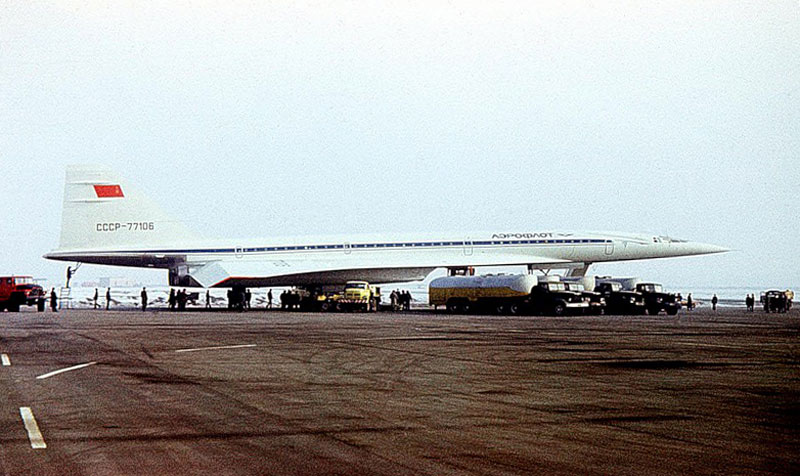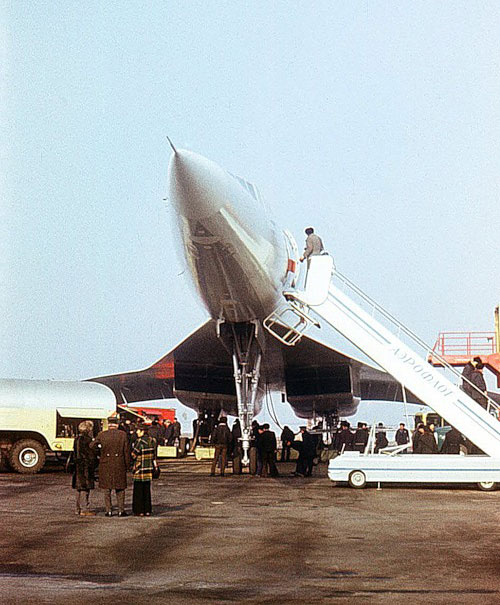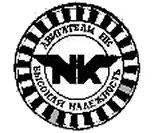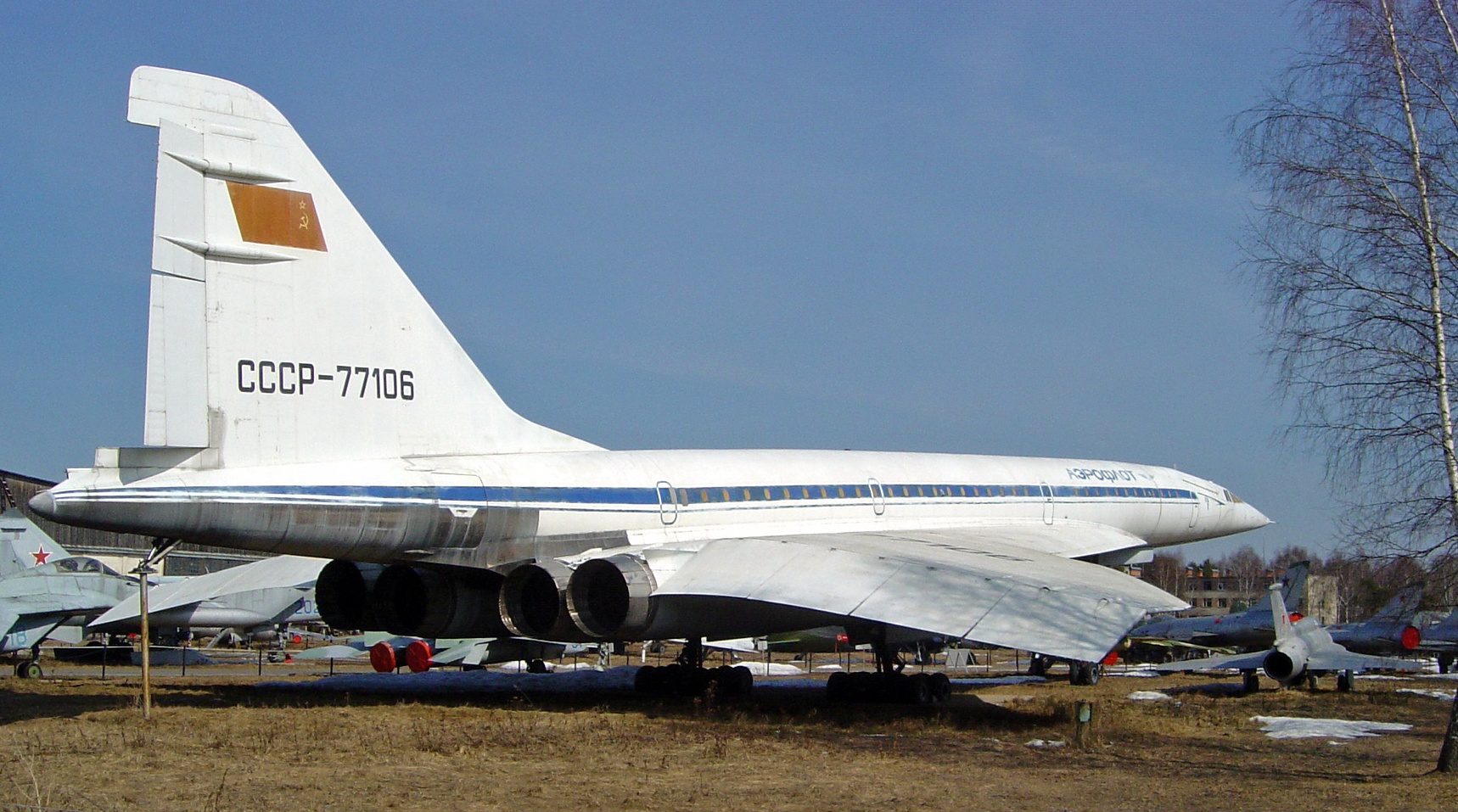

004-1 was the first production Tu-144S delivered to Aeroflot. A prototype and a pre-production Tu-144S had been built first. There were a total of 16 Tu-144s completed, with nine production Tu-144S and five Tu-144D models. The first production Tu 144S, CCCP-77102, broke up in flight at the Paris Air Show, 2 June 1973.¹

 The Tu-144S was built by Tupolev OKB at the Voronezh Aviation Plant (VASO), Pridacha Airport, Voronezh. It is a large double-delta-winged aircraft with a “droop” nose for improved low speed cockpit visibility and retractable canards mounted high on the fuselage behind the cockpit. It was flown by a flight crew of three and was designed to carry up to 120 passengers.
The Tu-144S was built by Tupolev OKB at the Voronezh Aviation Plant (VASO), Pridacha Airport, Voronezh. It is a large double-delta-winged aircraft with a “droop” nose for improved low speed cockpit visibility and retractable canards mounted high on the fuselage behind the cockpit. It was flown by a flight crew of three and was designed to carry up to 120 passengers.
77106 is 65.50 meters (215 feet, 6.6 inches) long, with a wingspan of 28.00 meters (91 feet, 10.4 inches). The tip of the vertical fin was 11.45 meters (37 feet, 6.8 inches) high. The 144S has a total wing are of 503 square meters (5,414 square feet). Its empty weight is 91,800 kilograms (202,384 pounds) and the maximum takeoff weight is 195,000 kilograms (429,901 pounds). (A number of Tu-144S airliners had extended wing tips, increasing the span to 28.80 meters (94 feet, 5.9 inches) and the wing area to 507 square meters (5,457 square feet).

The 144S has a cruise speed of Mach 2.07 (2,200 kilometers per hour/1,367 miles per hour) with a maximum speed of Mach 2.35 (2,500 kilometers per hour/1,553 miles per hour). The service ceiling is approximately 20,000 meters (65,617 feet). Its practical range is 3,080 kilometers (1,914 miles).
In actual commercial service, the Tu-144 was extremely unreliable. It was withdrawn from service after a total of just 102 commercial flights, including 55 passenger flights.
004-1 made its first flight 4 March 1975 at Voronezh. On 29 February 1980, it made its 320th and final flight when it was flown to the Central Air Force Museum of Russia at Monino, Russia. The airframe has a total flight time of 582 hours, 36 minutes.

¹ https://www.thisdayinaviation.com/3-june-1973/
© 2023, Bryan R. Swopes
Otherwise known as ‘Concordski’
🙂
Ah, another bitter brit, i guess. 😉 Flew first, got supersonic first, much faster overall, very different aerodynamics (double-delta wing vs ogive wing eg) – so no, no copy, mate…
Bryan, the 144s wing is a double-delta, not delta – same effect for generating the necessary vortex (only slightly less effectice but easier to calculate) as the ogive wing (a german invention btw, by Ing. Dietrich Kuechemann, today convienently “forgotten” by the brits…).
One can add that due to to the need of afterburners for cruise speed the cabin was so noisy that people sitting not next to each other could only communicate by passing handwritten notes (Even screaming didn´t help!). Usually the last five rows were blocked due to literally deafening and life-threatening noise-levels.
The lack of engines capable of supercruise (without afterburners) made the 144 a heavy drinker (like all good russians 😉 ), and the lack of range prevented commercial success. The later Kolesov RD-36 were no solution to that problem, so the project died slowly.
The large drop-forged panels developed a form of internal corrosion that resulted in cracks that quickly spreaded over meters along the bending stress lines since there were no crack-arresting design feature to stop it.
This also contributed to the Paris Air Show Crash in 1973.
A last hooray for the 144 came in 1996, when NASA (and CIA btw) funded the outfitting of 77114, the last fully completed 144 (77115 flew, but never supersonic, 77116 is still incompleted at the Woronezk plant), with Kusnetzow RD-321 engines (usually fitted on the Tu-160 Blackjack-bombers) for high-speed high-altitude research flights. This was the only 144 with russian registration (RA-77114 instead of CCCP-77114), and also the fastest of them all (TWICE the Thrust of a Concorde(!!) ).
This machine is now the Gateguard at Moscow-Shukowski airport.
Today the only 144 outside russia can be visited at Sinsheim Museum in germany, alongside (!) Concorde #207.
Thank you! Very interesting information, as always. 🙂
Oh, i forgot to mention that the 144 in germany is 77112, and that 77114 with the Blackjack-engines had (finally! 😉 ) more range than Concorde. Still not commercially feasible though because of the outrageously expensive military-grade engines… 😉